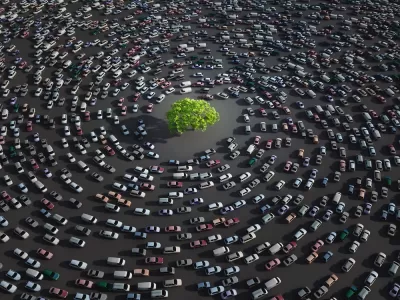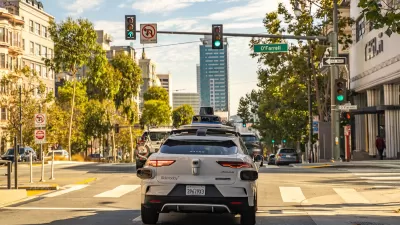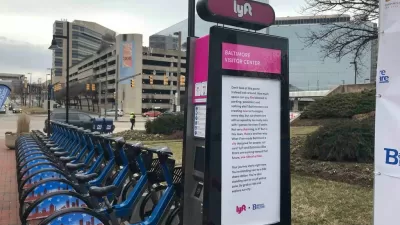You remember the one showing the amount of space occupied by 60 people on a bike, 60 people on a bus, and 60 people in cars? It's also helpful for making a convenient point about Uber and self-driving cars.

Jon Orcutt, communications and advocacy director for Transit center, turned a familiar image on its head this week, posting the following tweet:
— Jon Orcutt (@jonorcutt) June 29, 2016
You'll remember the original image, which Jon Orcutt references with apologies, from Twitter, Facebook, and, yes, Planetizen.
With apologies to the original pic.twitter.com/Wlb3b5IP5k
— Jon Orcutt (@jonorcutt) June 29, 2016
The point is fairly simple: a car is a car, and with the car comes inefficiencies with only theoretical potential for improvements. Ron Kilcoyne made a related point in November 2015 about the potential for autonomous vehicles to explode vehicles miles traveled, and the negative externalities that would come along with that "disruption"—even if congestion isn't one of them.
Regarding transportation network companies, the jury is still out on the effect on congestion of Uber and its brethren, and early efforts to connect TNCs with transit, or paratransit, have yet to prove effective in reducing congestion or pollution.
FULL STORY: Space required to transport 60 people

Planetizen Federal Action Tracker
A weekly monitor of how Trump’s orders and actions are impacting planners and planning in America.

Maui's Vacation Rental Debate Turns Ugly
Verbal attacks, misinformation campaigns and fistfights plague a high-stakes debate to convert thousands of vacation rentals into long-term housing.

Restaurant Patios Were a Pandemic Win — Why Were They so Hard to Keep?
Social distancing requirements and changes in travel patterns prompted cities to pilot new uses for street and sidewalk space. Then it got complicated.

In California Battle of Housing vs. Environment, Housing Just Won
A new state law significantly limits the power of CEQA, an environmental review law that served as a powerful tool for blocking new development.

Boulder Eliminates Parking Minimums Citywide
Officials estimate the cost of building a single underground parking space at up to $100,000.

Orange County, Florida Adopts Largest US “Sprawl Repair” Code
The ‘Orange Code’ seeks to rectify decades of sprawl-inducing, car-oriented development.
Urban Design for Planners 1: Software Tools
This six-course series explores essential urban design concepts using open source software and equips planners with the tools they need to participate fully in the urban design process.
Planning for Universal Design
Learn the tools for implementing Universal Design in planning regulations.
Heyer Gruel & Associates PA
JM Goldson LLC
Custer County Colorado
City of Camden Redevelopment Agency
City of Astoria
Transportation Research & Education Center (TREC) at Portland State University
Jefferson Parish Government
Camden Redevelopment Agency
City of Claremont





























